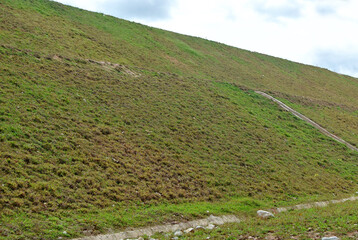The Process of Hydroseeding
Hydroseeding CT is a planting method that uses a slurry of mulch and seed. It is popular in construction sites as an erosion control technique. It is also a cost-effective way to establish a lawn. Hydroseeding also improves germination and helps prevent soil erosion. This article explores the process of Hydroseeding. Read on to learn more! Hydroseeding is a great way to start a new lawn.
Hydroseeding is a sophisticated planting process that uses a slurry to distribute seeds. It’s important to have smooth, de-compacted soil before hydroseeding. A local hydroseeding supplier can help you choose the proper materials and mix them to your specifications. Hydroseeding is especially important after large projects, such as construction sites.
It’s much easier and faster than traditional methods. The slurry binds to the soil almost immediately, creating an ideal microenvironment for the seed to germinate. It also has a high water-retention capacity, so hydroseeding is more efficient than other planting methods. Hydroseeding also helps with erosion control since the slurry will hold up to 10 times its weight in water. The process also reduces the need to use manual seeding and weed control measures.
Hydroseeding has many benefits for native plants, and it can increase the biodiversity of an area. In a study, hydroseeding increased the diversity of a plant species by 50 percent and an herb species by 60 percent. The results are not statistically significant, but they do show that hydroseeding can be a valuable tool in restoring degraded land.
There are several types of hydroseeding equipment. The most commonly used type uses mechanical agitation to mix the slurry. This method is the most efficient, but you can also use a jet agitation system if you have larger hydroseeding projects. If you plan to use hydroseeding as a part of your landscape design, make sure to check with your rental agency to learn more.
While sodding is a popular choice for home lawn care, hydroseeding is a cost-effective solution for landscaping enthusiasts. Sodding is cheaper, but it requires more work and attention. Hydroseeding is also easier to do yourself, which makes it a good option for busy individuals. Moreover, hydroseeding has a faster germination rate than sodding, which means that you can enjoy your lawn in less time.
Hydroseeding costs around $0.06 per square foot. However, hydroseeding equipment is expensive. It can cost up to $1,000. Besides the cost of the seed, you also need to pay for the hydroseeding equipment. Hydroseeding is a more cost-effective option for larger lawns. The cost of hydroseeding is also lower than that of sod pallets, which can cost as much as $10,000. However, the extra cost for hydroseeding goes towards hiring a licensed contractor.
Before applying hydroseed, you must ensure that the soil is de-compacted and smooth. The pH level should be between 6.5 and 7. If you find that your lawn is not healthy, you can use lime, sulfur, or compost to help lawn. Hydroseeding is not an ideal solution for areas with a high risk of drought. Additionally, hydroseeding does not work well in regions with water restrictions.
When hydroseeding, a technician will prepare the soil and use a hose to apply the slurry to your property. The soil must be graded so that it does not run toward buildings or other structures. The technician will then apply the slurry to the desired area with a nozzle and a garden hose. You can also choose to do the hydroseeding yourself by connecting a hose to a small container of grass slurry.
The process of hydroseeding is an excellent way to enhance germination rates. Unlike traditional seeding, hydroseeding utilizes a slurry that contains up to 10 times its weight in water. This moisture sealant helps seeds survive harsh conditions, and it also protects them from the elements. Hydroseeding is quick and cost-effective, and some soil additives may help reduce the time required for application.
Hydroseeding can be used in areas where traditional seeding methods can’t provide adequate results. For example, if the slope is less than 1:2, it is usually a good idea to apply straw mulch. The straw mulch also contains soil amendments, making it less difficult for the plants to germinate. Hydroseeding, on the other hand, provides a better chance of successful germination and is often a more economical option.
Another benefit of hydroseeding is that it promotes fast germination.


